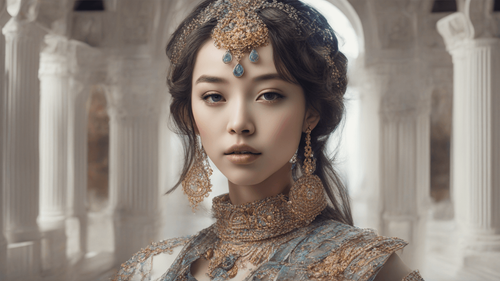
Introduction
In the realm of art and technology, a groundbreaking innovation has emerged that bridges the gap between creativity and artificial intelligence. Image-to-image AI art is revolutionizing the way we perceive and create visuals. This article delves deep into the captivating world of image-to-image AI art, exploring its applications, techniques, and the remarkable transformation it brings to the artistic landscape.
Image to Image AI Art: Transforming Vision
The core essence of image-to-image AI art lies in its ability to transform one type of visual content into another while retaining the essence and structure of the original. This technology leverages advanced machine learning algorithms to enable computers to "imagine" and generate art. Whether it's turning sketches into photorealistic images or transforming day scenes into night vistas, image-to-image AI art stretches the boundaries of creativity.
Applications of Image-to-Image AI Art
Image-to-image AI art finds its application across a spectrum of industries and creative domains. From architecture and fashion to entertainment and advertising, its versatility knows no bounds. Some remarkable applications include:
- Architectural Visualization: Envisioning building designs from blueprints and sketches.
- Fashion Design: Generating fabric patterns and garment designs from abstract concepts.
- Film and Animation: Creating stunning visual effects and transitioning scenes seamlessly.
- Photography Enhancement: Transforming ordinary photographs into visually striking masterpieces.
- Urban Planning: Simulating the transformation of urban landscapes for future developments.
Creating Art with Image-to-Image AI: Techniques and Tools
Generative Adversarial Networks (GANs)
At the heart of image-to-image AI art are Generative Adversarial Networks. GANs consist of two neural networks—the generator and the discriminator—working in tandem. The generator creates images, while the discriminator evaluates their authenticity. This dynamic interplay leads to the refinement of generated images over iterations, resulting in astonishingly realistic and imaginative artworks.
Pix2Pix: Bridging the Gap
Pix2Pix, a renowned image-to-image translation model, has garnered significant attention for its ability to learn mappings from input to output images. By training on paired images, Pix2Pix can convert sketches into lifelike images, turn maps into satellite views, and even convert day scenes into nightscapes. Its versatility and accuracy make it a game-changer in the field of AI-driven art.
Pushing Boundaries: Advancements in Image-to-Image AI Art
The realm of image-to-image AI art is dynamic and ever-evolving. Recent advancements have pushed the boundaries of what's possible, giving rise to more sophisticated and stunning creations. Some noteworthy advancements include:
- Style Transfer: Infusing artwork with the style of famous painters, creating a unique fusion of styles.
- Video-to-Image Translation: Transforming video frames into artistic images, opening new dimensions in cinematography.
- Interactive Art Generation: Allowing users to actively participate in the creation process, blurring the lines between artist and machine.
FAQs
How does image-to-image AI art work?
Image-to-image AI art employs deep learning algorithms, such as GANs, to analyze and synthesize visual data. By understanding patterns and structures, the AI generates transformed images while preserving key characteristics.
Can image-to-image AI art replace human artists?
While AI can create remarkable art, it's more about collaboration than replacement. Human artists infuse emotion, context, and unique perspectives into their work, aspects that AI, as of now, struggles to replicate.
Are there ethical concerns regarding AI-generated art?
Indeed, ethical questions arise, especially around copyright and originality. Some argue that AI-generated art lacks true originality, raising debates about authorship and ownership.
What are the limitations of image-to-image AI art?
AI art often excels in mimicking styles and patterns but can struggle with abstract or conceptual creations that require deep emotional understanding.
How can artists leverage image-to-image AI for their work?
Artists can integrate AI as a tool to enhance their creative process. For instance, it can be used to quickly visualize concepts or explore different styles before delving into the final artwork.
What does the future hold for image-to-image AI art?
The future is promising, with continued advancements in AI technology. We can anticipate even more sophisticated algorithms, seamless integration with creative workflows, and exciting collaborations between artists and machines.
Conclusion
In the ever-evolving landscape of art and technology, image-to-image AI art stands as a testament to human ingenuity and the limitless possibilities of AI. As we journey deeper into this realm, we're bound to witness an exciting fusion of creativity and computation, forever reshaping the way we perceive, create, and appreciate art. Image-to-image AI art is more than a tool; it's a gateway to a new era of artistic expression, where pixels and algorithms become brushes and canvases.